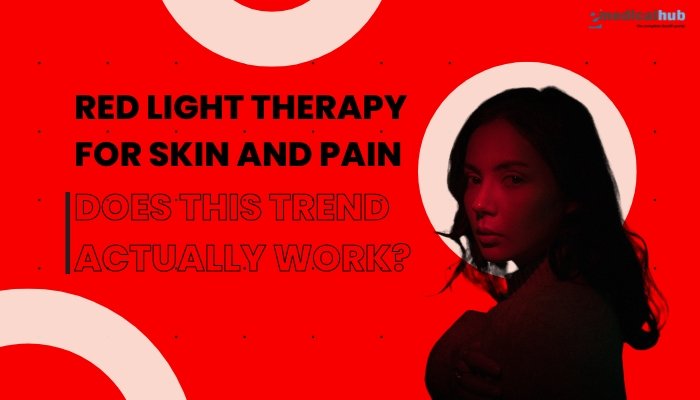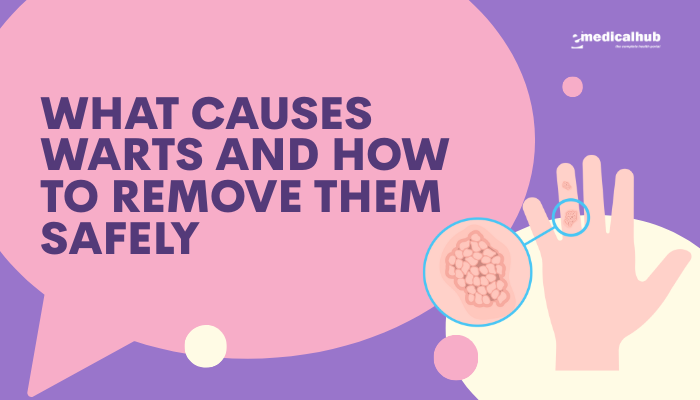Introduction
Vitiligo is a chronic autoimmune skin condition characterized by the loss of pigment-producing cells (melanocytes), leading to well-demarcated white patches on the skin. It affects people of all ages, genders, and ethnic backgrounds, often causing emotional distress due to its visible nature.
Over the years, vitiligo was primarily managed with topical steroids, phototherapy, or cosmetic camouflage, and definitive success was variable. However, recent breakthroughs in understanding vitiligo’s pathogenesis have led to innovative therapies that target immune pathways, repigmentation strategies, and more effective management options.
This article explores the newest treatment advances giving hope to vitiligo patients. We’ll discuss the science behind emerging therapies such as topical Janus kinase (JAK) inhibitors, biologic agents, and novel laser applications.
We’ll also look at surgical approaches, repigmentation-enhancing devices, and supportive treatments that bolster regimens. While there’s no universal cure yet, combination treatments and better knowledge of vitiligo’s autoimmune mechanisms are paving the way for more sustained improvement and, in some cases, near-complete repigmentation.
Disclaimer: This content is for general educational purposes and should not replace professional medical advice. If you suspect or have vitiligo, consult a qualified dermatologist for tailored assessment and management.
Understanding Vitiligo
Pathophysiology
Vitiligo involves the destruction or dysfunction of melanocytes, the cells that produce melanin (pigment) in the skin, hair, and sometimes ocular tissues. While exact triggers aren’t fully established, researchers believe an interplay of genetic predisposition, autoimmune factors, and oxidative stress can disrupt normal melanocyte function. Immune-mediated destruction is thought to be a primary driver, with T-cells targeting melanocytes.
Clinical Types
- Segmental Vitiligo: Affects one body area or dermatome and often appears earlier in life. It may have a shorter active phase compared to non-segmental.
- Non-Segmental (Generalized) Vitiligo: The most common form. Patches can appear symmetrically on the body, with active periods causing slow spread or multiple new spots.
- Focal Vitiligo: Limited patches in one or a few areas, without a clear segmental distribution.
Psychosocial Impact
Vitiligo’s visible white patches can significantly affect self-esteem, social interactions, and emotional well-being. Patient counseling and psychological support often go hand in hand with medical treatment.
Traditional Therapies: A Brief Review
Before exploring new advances, it’s helpful to understand the long-standing approaches:
- Topical Corticosteroids
- Reduce local inflammation, may induce repigmentation in mild or recent lesions.
- Side effects (skin atrophy, telangiectasia) limit long-term use, especially on thin-skinned areas.
- Topical Calcineurin Inhibitors (TCIs) (e.g., tacrolimus, pimecrolimus)
- Immunomodulators that reduce T-cell activation.
- Effective in sensitive areas (face, neck) with fewer steroid-like side effects. Might be slow in large or stable patches.
- Phototherapy
- Narrowband UVB: Considered a gold standard for widespread vitiligo. Usually requires 2–3 sessions per week for months to see repigmentation.
- PUVA (psoralen + UVA): Less commonly used nowadays due to side effects and logistical difficulties.
- Excimer Laser/Light: Targets localized lesions with higher-dose UVB, beneficial for stable or focal vitiligo.
- Surgical Procedures
- Mini Grafting: Transferring healthy pigmented skin or melanocyte culture to depigmented patches. Works best if vitiligo is stable.
- Punch Grafting: Tiny grafts help seed melanocytes, sometimes combined with phototherapy.
- Camouflage
- Cosmeceutical tinted creams or self-tanners that match surrounding skin tone.
- While not therapeutic, they enhance psychological well-being by masking the contrast.
These options remain important but can have limitations or partial success rates. Many patients experience relapses or incomplete repigmentation, fueling research into targeted immunotherapies and advanced technologies.
JAK Inhibitors: A Game Changer
Background on JAK Pathway
Janus kinase (JAK) proteins are part of signaling pathways implicated in various autoimmune disorders. By blocking these pathways, JAK inhibitors can diminish the inflammatory cascade that targets melanocytes. Originally developed for rheumatoid arthritis and other inflammatory conditions, their potential in dermatology emerged when topical ruxolitinib showed positive results for vitiligo.
Ruxolitinib Cream (Opzelura)
- Mechanism: Ruxolitinib inhibits JAK1/2, reducing immune attack on melanocytes and easing local inflammation.
- Clinical Results: Phase 3 trials demonstrated significant repigmentation in many patients with non-segmental vitiligo, especially on the face.
- FDA Approval: In 2022, ruxolitinib cream gained approval for topical treatment of non-segmental vitiligo in patients 12 years and older.
- Usage: Applied twice daily to patches, potentially combined with light therapy for enhanced effect.
- Side Effects: Usually mild, such as application site reactions; systemic absorption is minimal but caution is advised for large areas.
Practical Considerations
- Timeframe: Visible repigmentation can start after 8–12 weeks, with continued improvement over 6+ months.
- Limitations: Works best on actively depigmented areas, and cost or insurance coverage might be barriers.
- Future: Ruxolitinib’s success paves the way for other topical or oral JAK inhibitors in vitiligo management.
Other JAK Inhibitors
- Tofacitinib (JAK1/3) and Baricitinib (JAK1/2) have shown anecdotal or early-study repigmentation. Oral forms raise more systemic side effect concerns (infections, lab abnormalities), so topical formulations or low-dose regimens could be explored further.
Emerging Biologic Therapies
IL-15 and Other Cytokine Targets
Vitiligo pathogenesis includes T-cell–mediated melanocyte destruction, orchestrated by cytokines like IFN-γ and IL-15. Researchers are investigating biologics that block these inflammatory signals:
- IL-15 Blockade: IL-15 fosters tissue-resident memory T-cells. Blocking it could hamper the T-cells driving vitiligo lesions. Clinical trials are ongoing.
- IFN-γ Pathway: Experimental therapies might disrupt the chemokine signals recruiting cytotoxic T-cells to melanocytes. Early-phase studies are in progress.
Dupilumab (IL-4/IL-13 Blocker)?
While dupilumab is FDA-approved for atopic dermatitis, it modulates type 2 inflammation. Vitiligo primarily involves Th1/Th17 inflammatory pathways, so dupilumab’s role in vitiligo is less clear. Preliminary case reports are inconclusive, but research continues.
Conclusion: Biologics used in psoriasis and atopic dermatitis open a door to new targeted approaches for vitiligo, though which cytokines are most relevant is still under investigation.
Laser and Light Innovations
Targeted Phototherapy
Excimer Laser: Delivers high-dose, localized 308 nm UVB to vitiligo patches, sparing healthy skin.
- Advantages: Good for stable, localized lesions that might not warrant full-body narrowband UVB.
- Combination: Pairing with topicals (corticosteroids or tacrolimus) can speed repigmentation.
Fractional CO2 Laser: Sometimes used to prepare depigmented skin for melanocyte grafting or to disrupt the skin barrier, followed by topical treatments. More data is needed to confirm routine usage.
Low-Level Light Therapy (LLLT)
Low-intensity lasers or light devices might improve local circulation or reduce oxidative stress. Some small studies suggest mild benefits, but not as robust as excimer or standard phototherapy.
Surgical Approaches: Refined Techniques
Non-Cultured Melanocyte–Keratinocyte Transplantation (MKTP)
- What It Is: A small sample of the patient’s normal pigmented skin is processed to isolate melanocytes and keratinocytes. This cellular suspension is then applied to depigmented patches.
- Success Rates: Can achieve 70–80% repigmentation in stable vitiligo, especially when combined with phototherapy post-transplant.
- Benefits: Less scarring, covers larger areas than punch grafting, and better color match.
- Limitations: Requires stability of vitiligo (no new patches for 6–12 months), specialized equipment, and expertise.
Punch or Suction Blister Grafting
Older methods still have utility for small or resistant patches. However, scarring or texture irregularities can occur if not done carefully.
Combining Surgery with Medical Therapies
Postoperative use of phototherapy or topical immunomodulators can maintain transplanted melanocytes, encouraging robust repigmentation.
Micropigmentation (Medical Tattooing)
Concept
Injecting pigment into depigmented areas to camouflage patches. Suited for small stable lesions, especially in areas where typical therapies fail (e.g., lips, areola).
Pros and Cons
- Pros: Immediate color correction if a close match is found.
- Cons: Pigment might fade or mismatch over time, especially if surrounding skin tans or changes color. Potential for uneven results. Not an actual repigmentation method, purely cosmetic.
Tip: Evaluate micropigmentation only when vitiligo is stable; an expanding patch post-tattoo can lead to awkward color differences.
Integrated Treatment Strategies
With multiple therapies available, combining approaches offers synergistic benefits:
- Topical JAK Inhibitor + Phototherapy: Helps reduce local immune destruction and fosters melanocyte migration back into patches.
- Surgical Grafting + Postoperative Light: Encourages successful transplant acceptance and ongoing repigmentation.
- Lifestyle and Antioxidants: Although not curative, antioxidant-rich diets (e.g., vitamins C and E, polyphenols) might protect melanocytes from oxidative stress.
- Psychological Support: Holistic care addresses self-esteem challenges, ensuring better compliance and mental well-being.
Professional guidelines often adopt a stepwise approach depending on vitiligo extent, activity, and location.
Advances in Repigmentation Research
Melanocyte Stem Cells
Researchers are exploring ways to activate dormant melanocyte stem cells in hair follicles, encouraging them to migrate and repopulate depigmented areas. Understanding signals that trigger these cells to produce melanin might yield future topical solutions.
Gene and Cell Therapies
Preclinical studies investigate gene editing or re-introducing genetically healthy melanocytes in autoimmune conditions. While likely years away from clinical use, they signify the potential for more definitive cures.
Personalized Medicine
Biomarkers (e.g., cytokine profiles, genetic markers) may predict which patients respond best to certain therapies or are at risk of relapse. Personalizing treatment could maximize results and minimize trial-and-error.
Addressing Myths and Misconceptions
Myth 1: Vitiligo is merely cosmetic.
Reality: Although not life-threatening, vitiligo’s psycho-social impact is profound. It’s an autoimmune disorder that can coincide with other autoimmune conditions (e.g., thyroid disease).
Myth 2: Vitiligo is contagious.
Reality: It’s not infectious or transmissible; you can’t ‘catch’ it from someone.
Myth 3: Tanning or tanning beds can hide vitiligo.
Reality: UV tanning can darken normal skin, making depigmented patches more apparent. Indoor tanning also raises skin cancer risks, not recommended for vitiligo management.
Myth 4: Diet alone can reverse vitiligo.
Reality: While balanced nutrition may help support immune balance, diet alone rarely halts or fully reverses vitiligo. It’s typically part of a multi-faceted approach.
Quality of Life Measures
Psychological Support
Coping with vitiligo requires more than just medical therapy. Counseling, support groups, or online communities help individuals share experiences, get tips on camouflage, and reduce stigma or isolation.
Camouflage Solutions
- Topical Cover-Ups: Pigmented makeup or specialized camouflage creams.
- Self-Tanners: Offer a temporary evening of skin tone if used consistently.
- Clothing Choices: Some prefer wearing clothes that reduce patch visibility, but many develop confidence to show skin as acceptance grows.
Frequently Asked Questions (FAQs)
Can vitiligo start at any age?
Yes. Though commonly it begins before age 30, onset can happen in childhood or even later in adulthood.
Will new therapies cure vitiligo permanently?
There’s no guaranteed permanent cure. Treatments often induce repigmentation, but some patients experience relapses. Research is ongoing for more lasting remission.
Is it safe to use ruxolitinib cream on large body areas?
Clinical trials mostly tested moderate body surface areas. While it’s generally well tolerated, using it extensively requires dermatologist supervision to monitor potential systemic absorption.
Do supplements like ginkgo biloba or vitamins help vitiligo?
Anecdotal evidence suggests some benefit in certain cases, but robust data is limited. They can be adjunctive but not stand-alone cures.
How long until I see results with new therapies like JAK inhibitors?
Visible repigmentation can take 2–3 months to begin. More significant improvements typically require 6 months or longer of consistent treatment.
Conclusion
The evolving landscape of vitiligo treatments brings renewed optimism for patients seeking more consistent and lasting repigmentation. Conventional mainstays—like topical steroids or phototherapy—remain important, but cutting-edge therapies such as topical JAK inhibitors (e.g., ruxolitinib cream), refined surgical grafts, and potential biologic approaches have substantially advanced management. While complete remission may still be challenging for some, these breakthroughs can reduce depigmentation, expand repigmented areas, and enhance quality of life.
In addition, a comprehensive approach includes addressing emotional health, maintaining a healthy lifestyle, and adjusting daily routines to support treatment success. If you or a loved one faces vitiligo, partnering with a dermatologist familiar with emerging therapies can ensure a personalized care plan. With ongoing research and clinical trials, hope remains that future interventions will push vitiligo closer to full resolution for a broader population.
References
- Taïeb A, Picardo M. Epidemiology, definitions and classification of vitiligo. Clin Dermatol. 2018;36(1):40-45.
- Bleehen SS, Ead RD, McDonald-Gibson W, et al. Systemic treatment of vitiligo. Br J Dermatol. 2018;178(3):501-508.
- Rosmarin D, Pandya AG, Lebwohl M, et al. Ruxolitinib cream for the treatment of vitiligo. N Engl J Med. 2022;386(16):1445-1453.
- Passeron T, Ortonne JP. Physiopathology and genetics of vitiligo. J Autoimmun. 2020;110:102379.
- Patel AB, Kubba S, Kubba A. Non-cultured epidermal cell suspension in vitiligo surgery. Indian J Dermatol Venereol Leprol. 2020;86(6):5-11.
- Mechling AE, Griffith RD, Pandya AG. Janus kinase inhibitors for vitiligo. J Invest Dermatol. 2021;141(2):316-321.
- Mulekar SV, Ghwish B, Al Issa A, et al. Efficacy of noncultured extracted hair follicle outer root sheath cell suspension in vitiligo. Dermatol Surg. 2018;40(12):1410-5.
- Parsad D, Gupta S. Standard guidelines of care: surgical management of vitiligo. Indian J Dermatol Venereol Leprol. 2021;87(3):341-50.
- Strasswimmer J, Grande DJ. Advances in laser and surgical management of vitiligo. Dermatol Clin. 2020;28(2):337-45.
- Eleftheriadou V, Atkar R, Batchelor J, et al. British Association of Dermatologists’ guidelines for the management of people with vitiligo. Br J Dermatol. 2021;186(1):18-29.
- Dell’Anna ML, Kovacs D, Farina M, et al. Exosomes and integrins: bridging the gap in vitiligo pathogenesis. J Invest Dermatol. 2022;142(5):1293-1301.
- Ezzedine K, Eleftheriadou V, Whitton M, et al. Psychosocial effects of vitiligo: a comprehensive review. Br J Dermatol. 2019;181(5):1141-1152.




